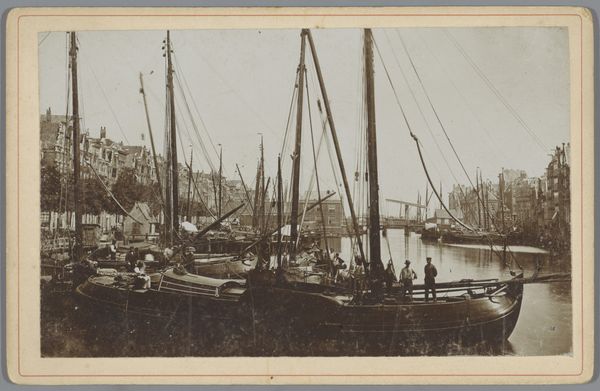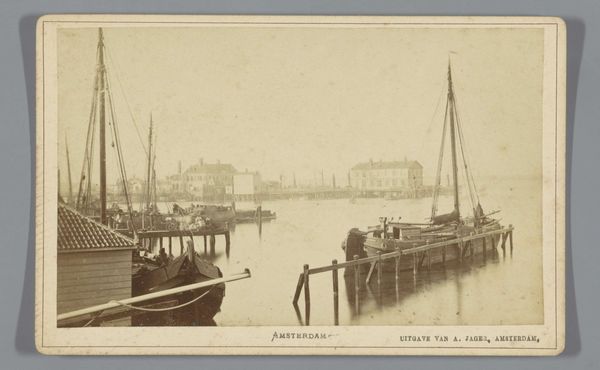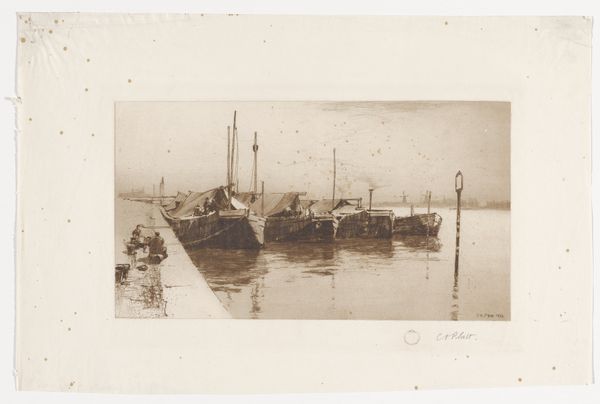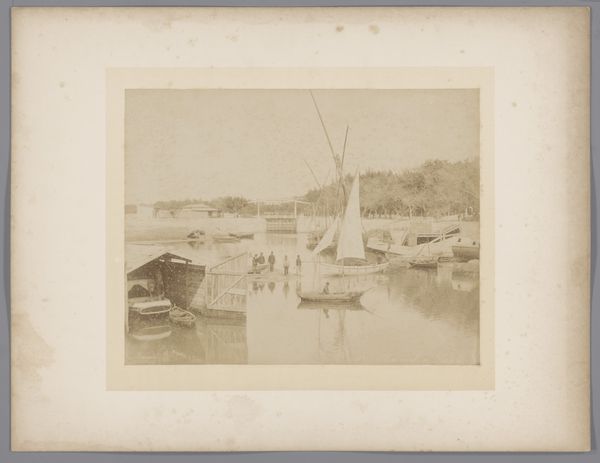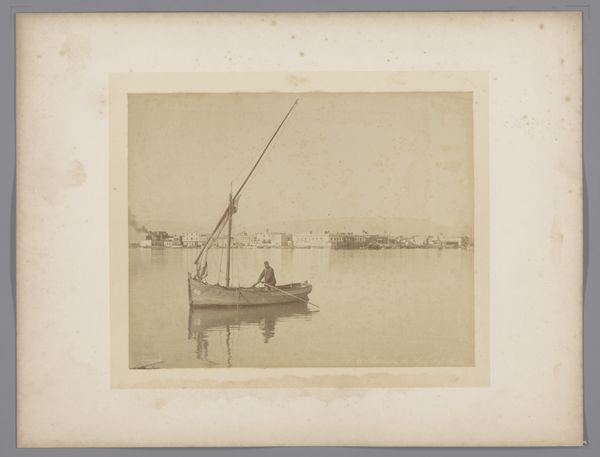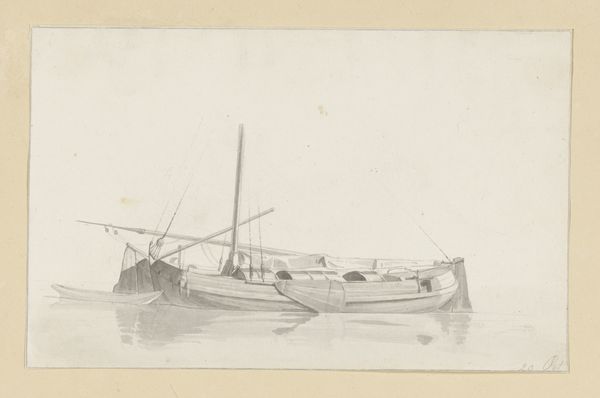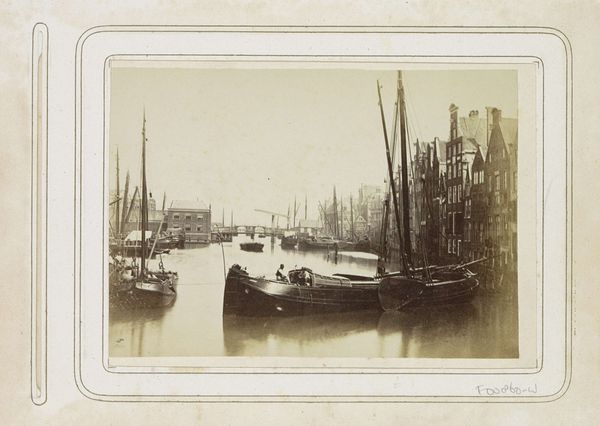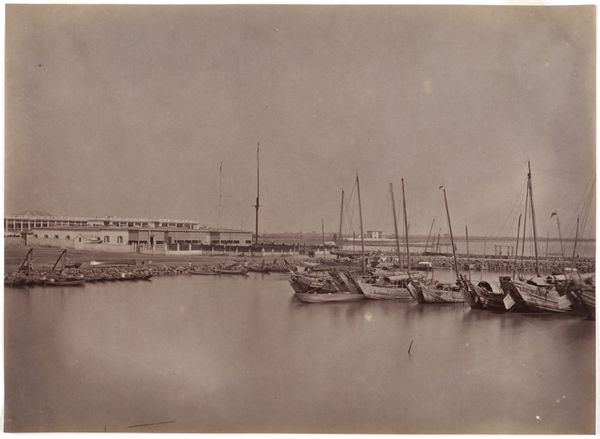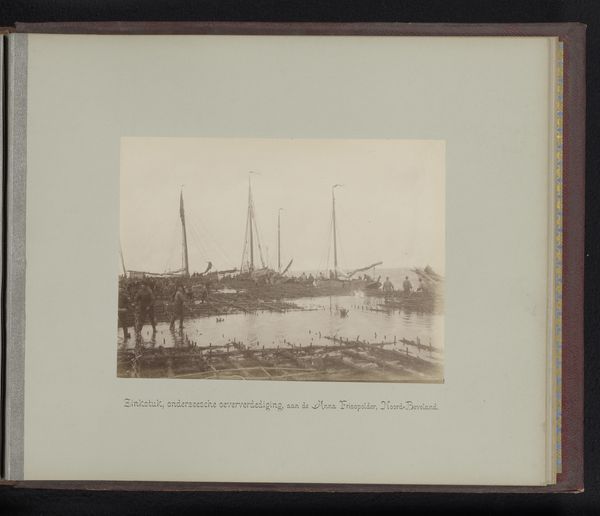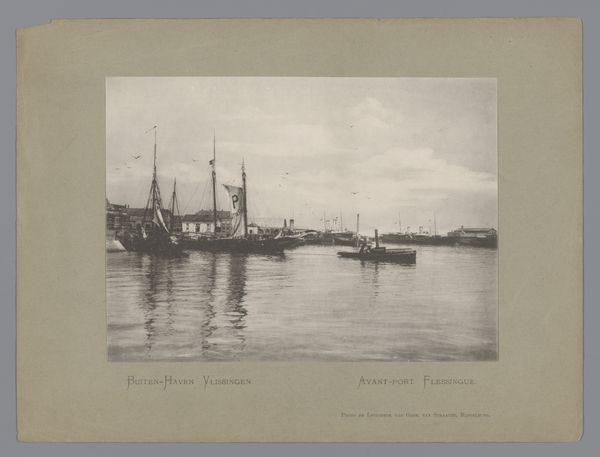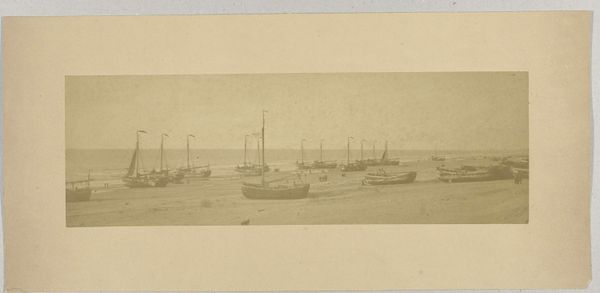
photography, gelatin-silver-print
#
dutch-golden-age
#
landscape
#
photography
#
gelatin-silver-print
#
cityscape
Dimensions: height 108 mm, width 168 mm
Copyright: Rijks Museum: Open Domain
Curator: Here we have a gelatin-silver print titled "Gezicht op de Rijnkade in Arnhem" or "View of the Rhine Quay in Arnhem" created between 1860 and 1890 by Andries Jager. It's part of the Rijksmuseum collection. Editor: Ah, this gelatin-silver print! It has a melancholic feel—a foggy cityscape softened by age, almost dreamlike. Curator: Indeed. Jager has composed this scene using a classical landscape structure. We see a strong foreground dominated by boats, then the water, leading the eye toward the cityscape as background. Editor: The choice of this monochromatic palette, the faded sepia tones… It speaks to the quiet industry of river life and human architecture along the riverbank. Almost gives the impression of peering into the past. Curator: Note how the contrast is employed. The reflection of the boats, but also their positioning, creates a mirroring effect and offers a structured and almost philosophical observation of the material world in the urban and environmental interplay. Editor: Those boats are practically characters. Their forms and dark lines are rendered so vividly, full of detail, hinting at countless journeys up and down the Rhine. I'd like to have stories about where they came from. Curator: Consider also, though less obvious to modern eyes, that the very production and sale of photographs as images offered similar transit as those boats. The artist extends this effect. Editor: It makes me wonder about Jager's intention. Was it merely documentation or was there some deeper resonance, some hidden message, in freezing this transient scene? Curator: As an example of Golden Age photography, the composition is, more or less, a commentary on the rise of industrial life as captured using newly evolved techniques of mechanically creating artwork and new levels of fidelity and resolution. Editor: It feels to me that it's less about just recording and more like imbuing the moment with quiet nostalgia—an almost longing for permanence in a changing world. Curator: The longer view is interesting precisely because of how it helps understand later transformations in industrial landscape, photography, and how technological changes transform not just art but consciousness. Editor: Absolutely. This gelatin print makes a compelling argument—offering more than just a glimpse, inviting reflection on how time changes our world but keeps on giving glimpses of a layered past.
Comments
No comments
Be the first to comment and join the conversation on the ultimate creative platform.
